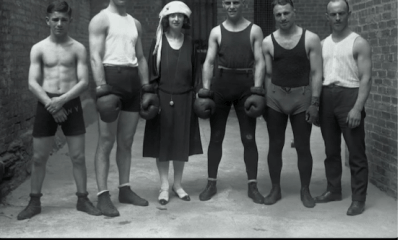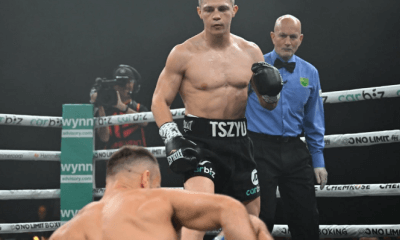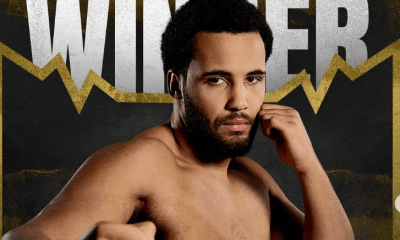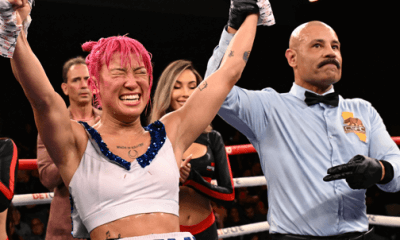Featured Articles
Boxing Needs More John Scullys

“Iceman” John Scully might be complex or he might be uncomplicated, but whatever the case and unlike many in the periphery of boxing who have a disproportionate sense of self-importance, he is real, humble, accessible, well-grounded, direct in a nice way, and a brutally honest person who has done it all; and I mean all.
He was an outstanding amateur boxer, a skilled boxer-puncher with an extraordinary ring IQ, who concluded his amateur career with a Bronze medal winning performance at the 1988 U.S. Olympic Trials. His proudest moment was defeating Darin Allen in 1988 to qualify for the U.S. Olympic trials. He says, “Darin was a world amateur champion, a national champion and one of the most well respected boxers in the world at the time, and I always knew that a fight with him would be like a Super Bowl type event for me.”
He became a two-time title contender in the professional ranks, finishing with an admirable 38-11 record (though he was not quite able to transfer his amateur success). He was only stopped once and that was by the mysterious Drake Thadzi who had just won a decision over James Toney. Scully’s opposition included names like Littles, Nunn (one of his best performances in a losing cause), Maske, Thornton, Bridges and Rocchigiani.
After retiring in 2001, he did some excellent TV commentating with Joe Tessitore on ESPN Classic. He was a cerebral, smooth and articulate ringside analyst for that network’s Boxing Series. By all accounts, he should have been picked up by one of the national networks, but it was not to be. Nevertheless, he took what he had learned over the years and put it all together, turning it into a successful training career. At the age of 51, he still spars with his charges.
There were signs along the way of the kind of values John possessed. When William Papaleo “Willie Pep” passed away on November 23, 2006, sadly only three ex or current boxers attended the funeral. One was John .
In 2009, he was a relatively early inductee into the Connecticut Boxing Hall of Fame. The following is noted on its web site: “Boxing has been in Scully’s blood for nearly his entire life. He was a highly successful amateur. He was a solid professional. Now a trainer, Scully has worked with world champions. Scully twice fought for the world light heavyweight title. The lifelong Windsor resident won a New England middleweight crown and also captured an Eastern Regional national amateur championship…”. John has been the primary boost for getting boxing back into the Hartford area.
He also has been writing, chronicling his days in the ring with the “Iceman’s Diaries,” a work in progress. Scully is considered an outstanding historian–especially regarding his knowledge of his idol, Muhammed Ali, whom he tries to emulate by “living out his values, but having fun in the process.”
Very recently he was awarded the prestigious Bert Sugar Trophy by RING 10 in New York City. The award recognizes those “who carry a proficient knowledge of the history of boxing and preserve its memories.”
“I never turn down an interview request now because I find it pretty funny, it’s really a trip that you even care enough what I have to say to ask me,” Iceman says. But the fact is, he is a much sought-after interviewee and always thanks the interviewer for his or her time.
Trainer
I plan on training fighters for as long as I am alive on this earth.–Iceman John Scully
Even while boxing, he began to train other fighters as early as the late 1980’s. However, he became a sought-after trainer much later, guiding several boxers to world championships including: Liz Mueller, WIBF Lightweight Champion; Jose Antonio “El Gallo” Rivera, WBA Junior Middleweight Champion; Mike Oliver, IBO Super Bantamweight Champion; and “Bad” Chad Dawson, WBC Light heavyweight Champion. His highest achievement may have been in May of 2006, when he guided underdog Rivera to the WBA Junior Middleweight Championship, with a dominating points victory over defending champion Alejandro “Terra” Garcia (25-1 coming in) in Worcester, MA.
“Iceman” has also had a hand in the professional training of such notable boxers as heavy-handed Israel “Pito” Cardona, smooth Matt Godfrey, slick “Sucra” Ray Olivera, the super exciting Scott “The Sandman” Pemberton, talented Lawrence Clay-Bey, rugged Matt Remillard, and Puerto Rico born Francisco “The Wizard” Palacios.
John is currently a part of TEAM Artur Beterbiev, led by Marc Ramsey. Beterviev is one of the best in boxing, as attested to by the Chechen’s violent stoppage over previously undefeated Callum Johnson on October 7th in Chicago. And while in the Windy City, he took the time to check on the legendary Wilfred Benítez, who resides there under the care of his sister, Yvonne.
As an aside, this is what Scully has to say about Beterbiev: “Artur… is a monster. He’s a very powerful guy with unusual strength for a guy his size. As an amateur, he had over 300 fights. Beterbiev actually fought as a heavyweight (201 pounds) as an amateur, winning the European title and handling all the bigger guys….Beterbiev beat former world champion, Sergey Kovalev as an amateur.”
Scully (married with one daughter and three stepsons) also signed on to take part in a 10-year study at the renowned Lou Ruvo Center for Brain Health in Las Vegas, NV. Once a year, he and others undergo six hours of different kinds of testing and then the results are monitored to track progress or regression over a 10-year span. Happily, his results have been well above average thus far. In fact, Scully’s memory is exceptional.
And so the laurels go on and on and keep pouring in. Indeed, there is not enough space to write about all of them, including his community activism amongst other things. But then this is not as much about his many varied accomplishments (and renaissance-man persona) as it is about his less visible activity of reaching out to help other ex-boxers as they struggle with the transition from boxing. He gives the phrase “reaching out” a more noble meaning.
Reaching Out

A recent reunion in LA
The following from Facebook is representative of just one of the many such things the “Iceman” does to assist his boxing brothers and sisters: “RJ signed a “Roy Jones 2X World Champ” hat for me in June that I am currently auctioning off, with the highest bidder receiving it ASAP. Proceeds to go to the great, but badly ailing, three-time world champion Wilfred Benítez.”
He is in touch with Gerald McClellan’s loving sister and caregiver, Lisa. In fact, in 2017 he participated in a big event in Harlem that served to bring more awareness to G-Man and his difficult situation. Scully was able to secure a very generous donation for him from the Connecticut Boxing Hall of Fame committee. Currently, John has some beautiful special-edition boxing posters by Richard Slone that he plans to sell off, with the revenue to go directly to Gerald. Over that last few years, he has sold various pieces of boxing memorabilia, with the proceeds going to different former fighters.
The thing is, Gerald and Wilfred are the ones that everyone knows about; there are others who remain anonymous here, but they are out there and they are in need. As someone once said (it might have been Steve Buffery), boxers rarely leave the sport with more than they brought in. Scully has aligned himself with former middleweight Matt Farrago, President of Ring 10 in New York City and another former middleweight Alex “The Bronx Bomber” Ramos, with The Retired Boxers Foundation in Los Angeles; both of whom have done some amazing things for ex-boxers in need. Getting to Floyd Mayweather, Jr. remains a goal, as the good that Floyd could do for struggling ex boxers is virtually unlimited.
John also organizes fun gatherings (aka reunions) of ex-boxers, and recently had one at Fortune Boxing in Hollywood, California. He has also held them at three different spots in Harlem and New York City, in Las Vegas at Russ Anber’s Rival Boxing store, and at both casinos in Connecticut (Foxwoods and The Mohegan Sun). This past February, he conducted one in conjunction with USA Boxing at the New England Golden Gloves tournament in Lowell, Massachusetts. Guys like Roy Jones, Mike McCallum, Marlon Starling, Lamon Brewster, Montell Griffin, Ronnie Essett, Mickey Bey, Felix Nance and Micky Ward have attended, as have such entertainers as actor Frank Stallone and rappers Flava’ Flav’ and R.A as well.
As Ice puts it, “A lot of former boxers are unfortunately not sailing off into the sunset but, rather, are now being forced to fight much different and much harder types of battles in retirement. Fortunately, there are guys in the game who haven’t forgotten them and are constantly pushing for them to get the help they need. It really is a special thing to see, real boxing people helping real boxing people.” John is one of them. This is where the talk stops and the help begins; where the rubber hits the road.
‘Iceman’ John Scully “… is an uncomplicated man who picks directions, identifies preferences and sticks with what works. It’s always been that way, and it applies to everything in his life.” (Taken from an article titled Windsor’s ‘Iceman’ John Scully To Be Honored For Boxing Contributions, by Mike Anthony in the Hartford Courant dated September 22, 2018.)
John needs to keep doing what he is doing for a multitude of reasons, not the least of which being that it just might become contagious.
Floyd Mayweather Junior, are you listening?
Ted Sares is one of the world’s oldest active full power lifters and Strongman competitors. He is a member of Ring 10, and Ring 4’s Boxing Hall of Fame. He also is an Auxiliary Member of the Boxing Writers Association of America (BWAA).
Check out more boxing news on video at The Boxing Channel
-

 Featured Articles4 weeks ago
Featured Articles4 weeks agoThe Hauser Report: Zayas-Garcia, Pacquiao, Usyk, and the NYSAC
-
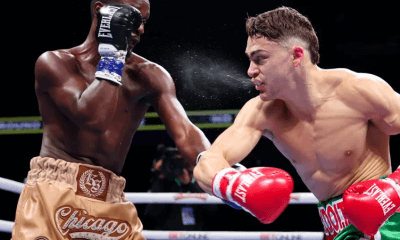
 Featured Articles3 weeks ago
Featured Articles3 weeks agoOscar Duarte and Regis Prograis Prevail on an Action-Packed Fight Card in Chicago
-
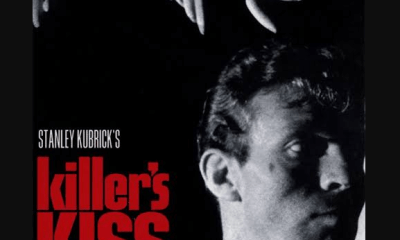
 Featured Articles2 weeks ago
Featured Articles2 weeks agoThe Hauser Report: Cinematic and Literary Notes
-
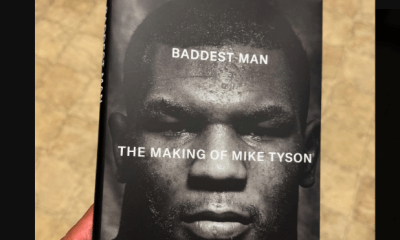
 Book Review2 weeks ago
Book Review2 weeks agoMark Kriegel’s New Book About Mike Tyson is a Must-Read
-

 Featured Articles4 weeks ago
Featured Articles4 weeks agoRemembering Dwight Muhammad Qawi (1953-2025) and his Triumphant Return to Prison
-
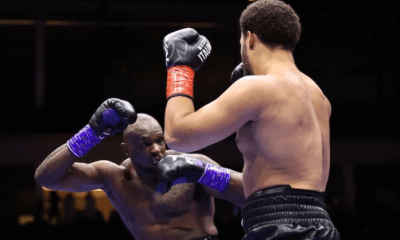
 Featured Articles6 days ago
Featured Articles6 days agoMoses Itauma Continues his Rapid Rise; Steamrolls Dillian Whyte in Riyadh
-
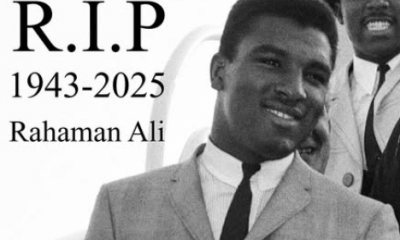
 Featured Articles3 weeks ago
Featured Articles3 weeks agoRahaman Ali (1943-2025)
-

 Featured Articles3 weeks ago
Featured Articles3 weeks agoTop Rank Boxing is in Limbo, but that Hasn’t Benched Robert Garcia’s Up-and-Comers




